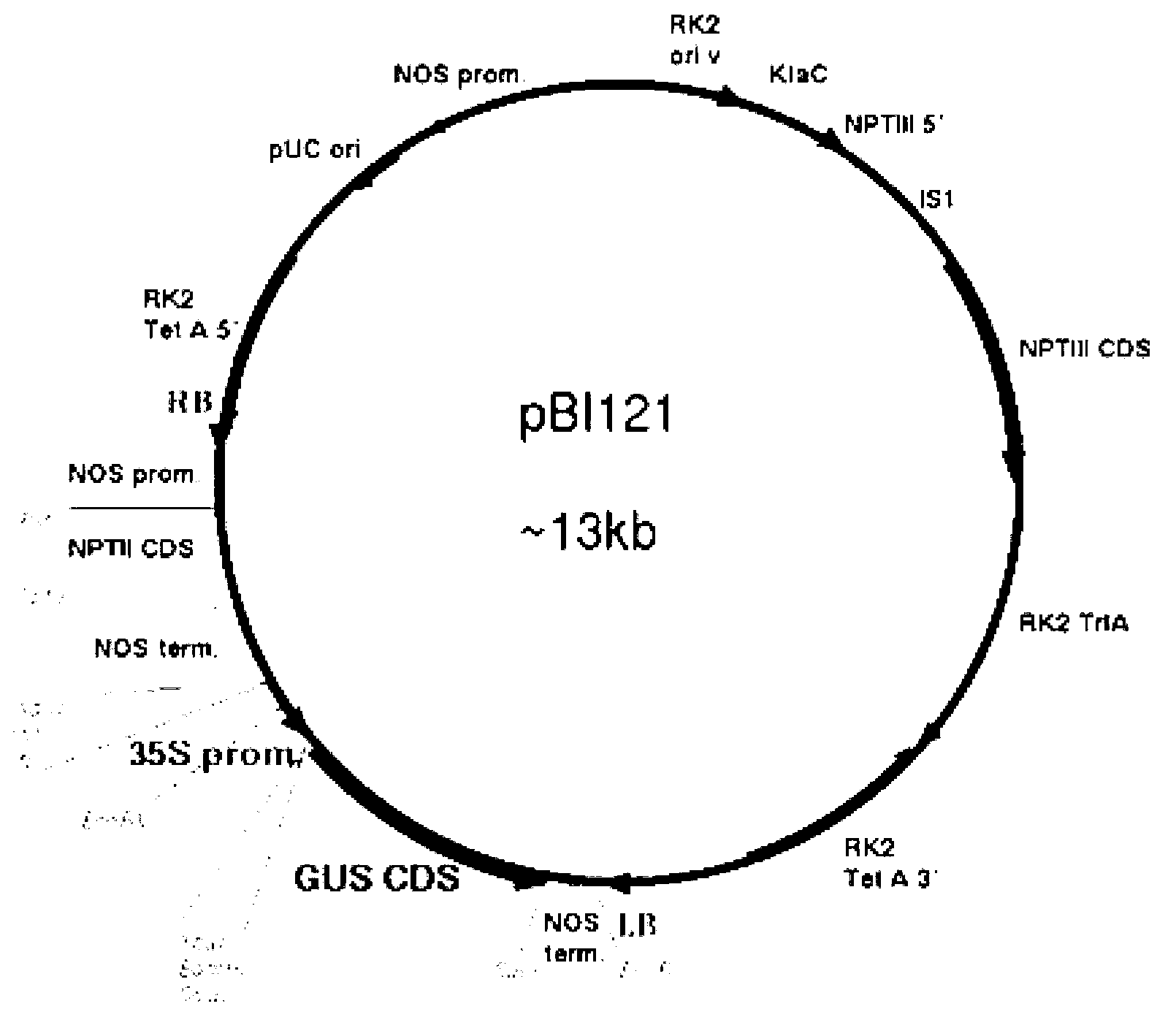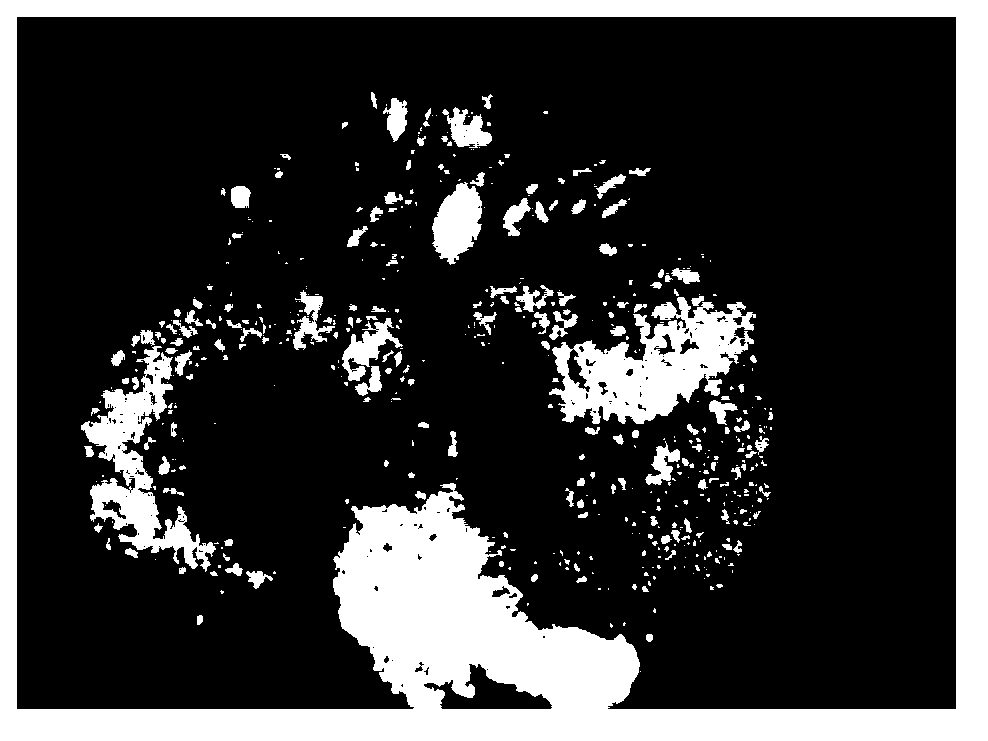Method for culturing agrobacterium-mediated transgenic salix matsudana plants
An Agrobacterium-mediated, transgenic technology, applied in botany equipment and methods, horticultural methods, genetic engineering, etc., can solve the problems of inability to induce resistant buds, inability to obtain willow transgenic plants, etc., and achieve short induction time and high transformation rate High, short incubation time effect
- Summary
- Abstract
- Description
- Claims
- Application Information
AI Technical Summary
Benefits of technology
Problems solved by technology
Method used
Image
Examples
specific Embodiment approach 1
[0020] Specific embodiment one: the method for cultivating transgenic Salix sativa plant mediated by Agrobacterium in the present embodiment is carried out according to the following steps:
[0021] 1. Sterilize the mature willow seeds, then inoculate the sterilized seeds in the pre-cultivation medium and cultivate them for 4-8 days to obtain germinated seeds;
[0022] 2. Pick a single Agrobacterium tumefaciens colony carrying the pBI121 vector, insert it into LB liquid medium containing 50mg / L kanamycin, and culture it overnight at 28°C to obtain OD 600 0.2-1.2 Agrobacterium liquid;
[0023] 3. The germinated seeds obtained by pre-cultivation in step 1 are excised from the base to germinate the terminal bud position, and 2 cotyledons are reserved, and the germinated seeds with excised terminal buds are used as explants, and the explants are placed in step 2 for preparation OD 600 Soak in 0.2-1.2 Agrobacterium bacteria solution for 30-40 minutes;
[0024] 4. Then the explan...
specific Embodiment approach 2
[0030] Specific embodiment two: This embodiment is a further description of the pre-culture medium in step one of the method for cultivating transgenic Salix salix plants mediated by Agrobacterium described in specific embodiment one, and the pre-culture medium described in step one is MS medium containing 1.0 mg / L zeatin, 0.1 mg / L naphthaleneacetic acid, 30 g / L sucrose and 8 g / L agar.
specific Embodiment approach 3
[0031] Specific embodiment three: This embodiment is a further description of the method for disinfecting mature willow seeds in step one of the method for cultivating transgenic willow plants mediated by Agrobacterium described in specific embodiment one. The method for disinfecting mature willow seeds is specifically: soaking mature willow seeds in an ethanol solution with a volume concentration of 70% for 30 seconds in an ultra-clean workbench, rinsing with distilled water twice, and then transferring them to a 1% volume concentration Soak in sodium hypochlorite solution for 10 minutes, rinse with distilled water 5 times.
PUM
 Login to View More
Login to View More Abstract
Description
Claims
Application Information
 Login to View More
Login to View More - R&D
- Intellectual Property
- Life Sciences
- Materials
- Tech Scout
- Unparalleled Data Quality
- Higher Quality Content
- 60% Fewer Hallucinations
Browse by: Latest US Patents, China's latest patents, Technical Efficacy Thesaurus, Application Domain, Technology Topic, Popular Technical Reports.
© 2025 PatSnap. All rights reserved.Legal|Privacy policy|Modern Slavery Act Transparency Statement|Sitemap|About US| Contact US: help@patsnap.com



